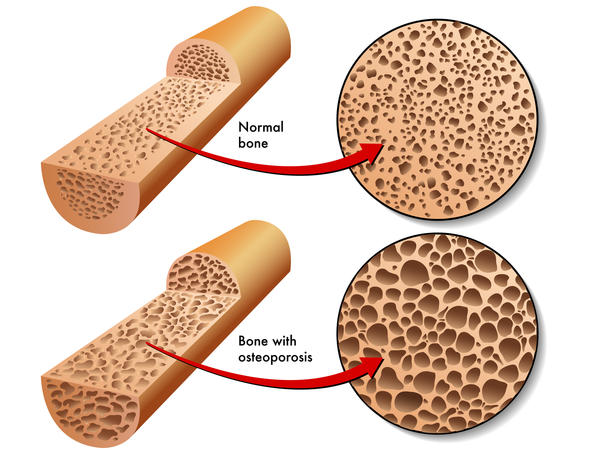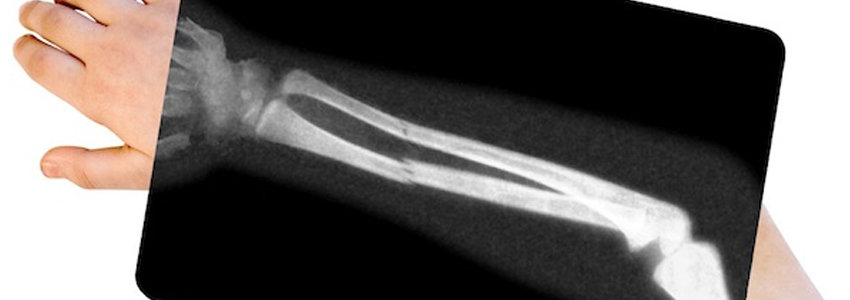While most of the focus on osteoporosis in terms of reported cases, diagnosis, treatment, research and cost burdens have been in the US and Europe, the latest audit report (October 2011) from International Osteoporosis Foundation (IOF) shows that Middle East and Africa regions are getting left behind in the global effort towards tackling osteoporosis.
The data on the markers mentioned were collected from 17 countries of the region including Turkey. Analysis done for individual countries as well as for the regions showed alarming forecasts of fractures to be brought on by osteoporosis. The predictions show that as many as 25% of the region’s population over the age of 50 years will be diagnosed with osteoporosis by as soon as 2020. The percentage will be a staggering 40% for the same age group by 2050. (1)
According to lead author of the report, Professor Ghada El-Hajj Fuleihan, Director of the Calcium Metabolism and Osteoporosis Program, and WHO Collaborating Center for Metabolic Bone Disorders, at the American University of Beirut, “This report reveals that a great research gap needs to be filled. Published data on incidence rates for hip fractures are only available for Iran, Kuwait, Saudi Arabia, Lebanon, Morocco and Turkey. Furthermore, access to densitometry and care was limited in many countries, and reimbursement for diagnostics and therapeutics varied widely.” (2)
The data was however scarce and the region has poor maintenance of such medical records. Though the Middle East has been experiencing an massive economic boom for decades due to it’s rich oil reserves, non-contagious diseases are still on the rise leading to high fatalities and existence of morbidities. It has come as a surprise that of the countries under audit, only five has a national osteoporosis guideline. More evidence needs to be collected so that health authorities are aided in developing appropriate and all-covering healthcare policies and programs.

The commonly employed technologies such as the Dual-energy X-ray Absorptiometry (DEXA) used worldwide to measure bone mineral density is available only in the urban centres both in the Middle East and Africa thus making those residing in the far flung areas of the region unserviced. This is coupled with the fact that the primary healthcare professionals themselves are inadequately informed about osteoporosis. This translates to poor quality educational programs on lifestyles, diets, prevention etc for the general public by the healthcare departments.
Another factor is the widespread deficiency of Vitamin D in the area despite abundant sunshine in a region close to the equator. A news report by the IOF said that a combination of factors such as dietary habits, absence of vitamin D fortification in common foods, harsh weather conditions that support indoor working and living, and cultural practices that encourage avoidance of Sun were all responsible for poor levels of Vitamin D in the population. (3).
According to the IOF President Professor John A. Kanis, “Despite the severity of the problem, osteoporosis is being dangerously ignored as it competes with other diseases for scarce healthcare resources and recognition. Notwithstanding the burden of fragility fractures, osteoporosis remains greatly under diagnosed and under treated, and both health professional training and public awareness is sub optimal in most countries in the region. The result is premature death for many hip fracture sufferers, immense personal suffering, lost productivity and long-term dependence on family members.” (4)
SOURCES:
- Burden of Osteoporotic Fractures Increases Dramatically in the Middle East and Africa; Science Daily News; March 2012; http://www.sciencedaily.com/releases/2011/10/111022161012.htm?utm_source=feedburner&utm_medium=email&utm_campaign=Feed%3A+sciencedaily%2Fhealth_medicine%2Fosteoporosis+%
28ScienceDaily%3A+Health+%26+Medicine+News+–+Osteoporosis%29 - Burden of osteoporotic fractures increases dramatically in the Middle East and Africa; Medical Xpress; March 2012; http://medicalxpress.com/news/2011-10-burden-osteoporotic-fractures-middle-east.html
- Vitamin D Deficiency Is Widespread And On The Increase; International Osteoporosis Foundation; June 2009; https://www.iofbonehealth.org/vitamin-d-deficiency-widespread-and-increase-0
- New report shows enormous human, social and economic cost of fractures in the region; International Osteoporosis Foundation – News; March 2012; http://www.iofbonehealth.org/bonehealth/burden-osteoporotic-fractures-increases-dramatically-middle-east-and-africa
Abstract of the study may be accessed at:
- Middle East & Africa Audit; International Osteoporosis Foundation; March 2012; http://www.iofbonehealth.org/bonehealth/middle-east-africa-audit
Full report may be accessed at:
- The Middle East & Africa Regional Audit – Epidemiology, costs & burden of osteoporosis in 2011; March 2012; InternationalOsteoporosis Foundation; http://www.biomechanism.com/wp-content/uploads/2011/10/Middle-East-and-Africa-regional-Audit-Burden-of-osteoporotic-fractures.pdf





Article Comments